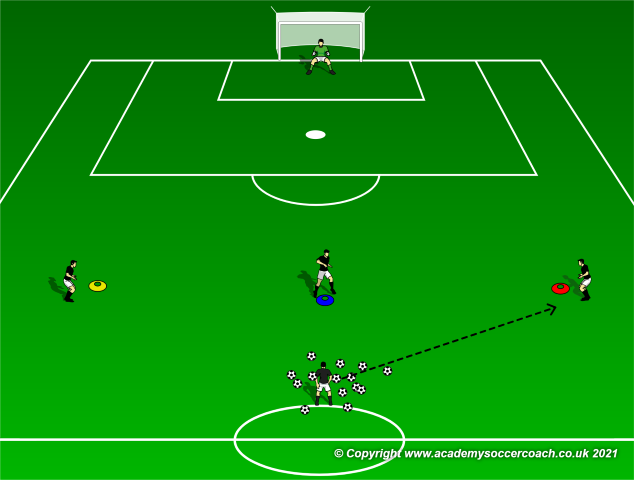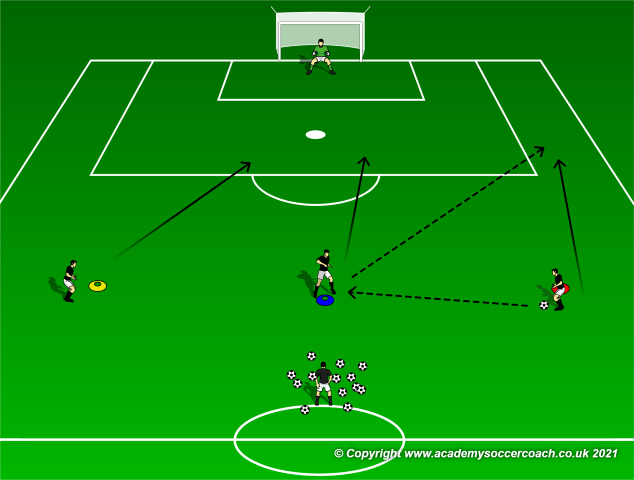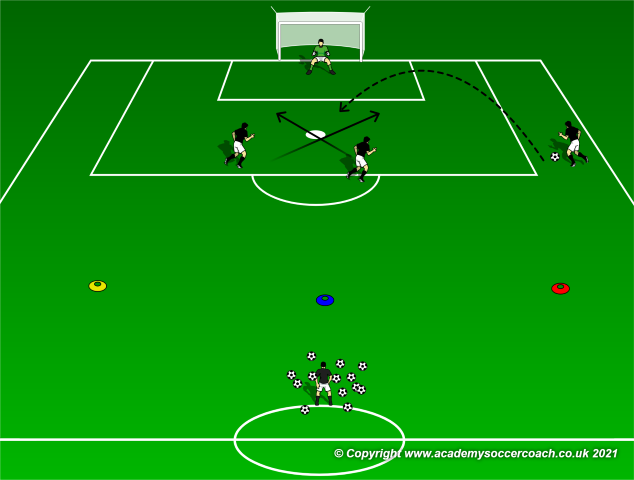By Danny Carvalho
Question - I have two very good wide players, but we don't get much success from wide positions. We put in some good crosses but don't get on the end of them too often. Do you have any drills that will help with timing of runs into the box?
Timing is absolutely one of the most important things when talking about crossing and finishing. As a matter of fact, TIMING IS KEY!
Good news is that, in my experience, most of the times in one or two practices focused on that is enough to see major improvement and immediate positive outcomes.
Setup:
Have all the balls near the midfield, and three players at a Left wing-center-right wing formation. The distance will depend on the age group and their level of play. For didactic purposes, let’s say it’s a U14 boys team, 40 yards from the goal line. Have a regular size goal and a GK or more to increase the tempo and give them a rest from play to play.

Execution:
The coach will be positioned in the midfield to play the first ball of every play. From play to play the starting side will change. On this example, you will see the play starting with the right winger (RW). Coach passes it to the RW whom will try to play a give and go with the center forward (CF).

With the ball traveling down on the right wing, the CF and the left winger (LW) got to sprint to the goalie box but carefully because of 1- they don’t to get caught offside and 2- they don’t want to get ahead of the cross. That is when the timing is getting extremely worked on.

COACHING POINTS:
1. as already mentioned, emphasize the importance of not getting ahead of the ball line in order to stay onside and to guarantee that the ball will be played in front of you and not behind you.
2. I strongly recommend focusing on and really try to get the players to understand point A (starting spot) and point B (oncoming spot). Encourage the players to recognize that most of the times in the final third we don’t want to be standing still at point B before the ball is crossed or passed. First reason: it’s easier to mark a standing still player. Second reason: you can put more power on the ball when you’re on the run as opposed to when you’re stood.
3. Eye contact. The crosser must lift their head up to see their teammates and the attackers on the box must read what decision the crosser might make. Sometimes a cross is not even needed if there’s an open player that the winger can pass to.
4. Deceive the opposition. Fake runs, swap spots with teammate, be creative!
VARIATIONS
- Put a player to play the first pass instead of the coach and then have they run onto the GK box to have three attackers to be assisted.
- Add mannequins or shadow defenders.
- Add one active defender.
By Danny Carvalho, DOC at Corinthians Campinas Youth Club, Brasil


